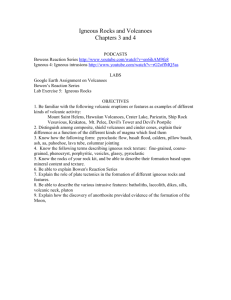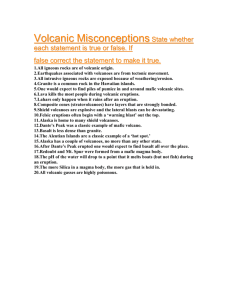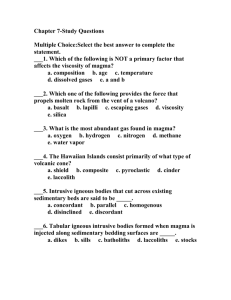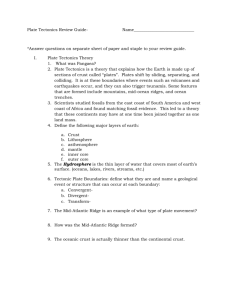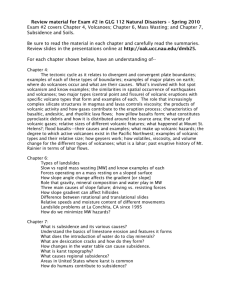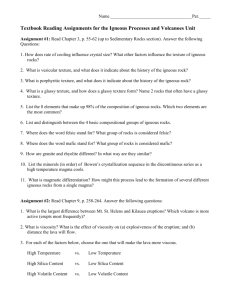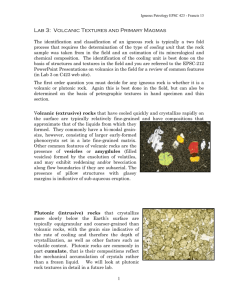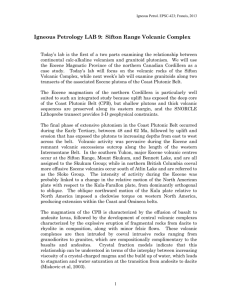Igneous Environments and Volcanoes: Chapters 5 and 6
advertisement
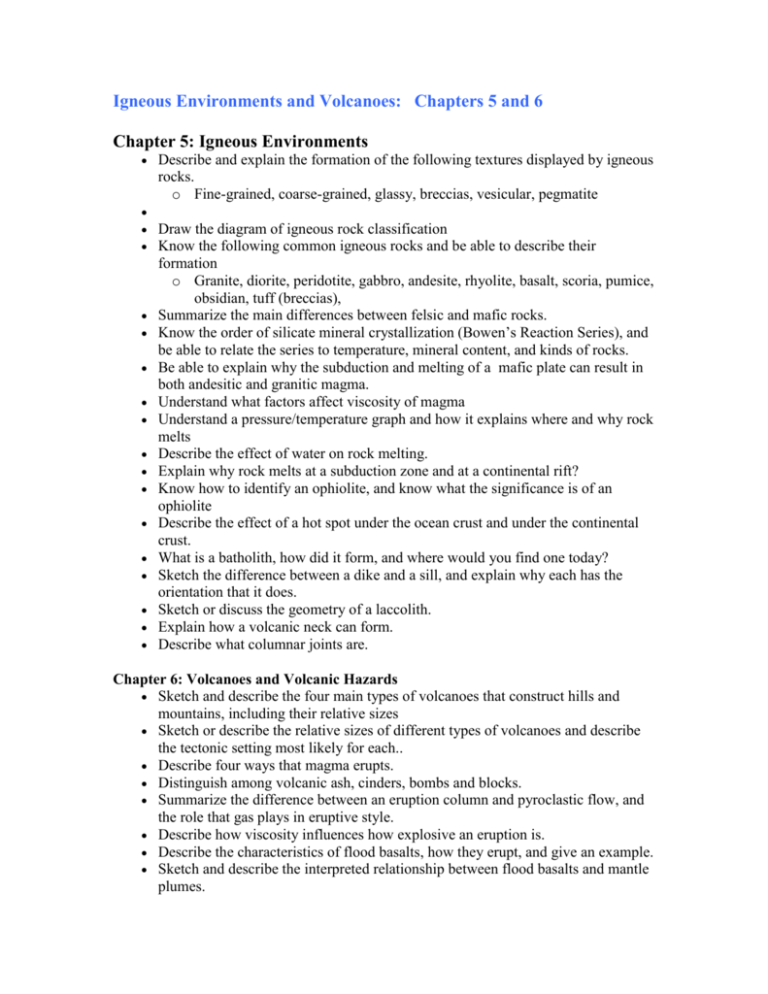
Igneous Environments and Volcanoes: Chapters 5 and 6 Chapter 5: Igneous Environments Describe and explain the formation of the following textures displayed by igneous rocks. o Fine-grained, coarse-grained, glassy, breccias, vesicular, pegmatite Draw the diagram of igneous rock classification Know the following common igneous rocks and be able to describe their formation o Granite, diorite, peridotite, gabbro, andesite, rhyolite, basalt, scoria, pumice, obsidian, tuff (breccias), Summarize the main differences between felsic and mafic rocks. Know the order of silicate mineral crystallization (Bowen’s Reaction Series), and be able to relate the series to temperature, mineral content, and kinds of rocks. Be able to explain why the subduction and melting of a mafic plate can result in both andesitic and granitic magma. Understand what factors affect viscosity of magma Understand a pressure/temperature graph and how it explains where and why rock melts Describe the effect of water on rock melting. Explain why rock melts at a subduction zone and at a continental rift? Know how to identify an ophiolite, and know what the significance is of an ophiolite Describe the effect of a hot spot under the ocean crust and under the continental crust. What is a batholith, how did it form, and where would you find one today? Sketch the difference between a dike and a sill, and explain why each has the orientation that it does. Sketch or discuss the geometry of a laccolith. Explain how a volcanic neck can form. Describe what columnar joints are. Chapter 6: Volcanoes and Volcanic Hazards Sketch and describe the four main types of volcanoes that construct hills and mountains, including their relative sizes Sketch or describe the relative sizes of different types of volcanoes and describe the tectonic setting most likely for each.. Describe four ways that magma erupts. Distinguish among volcanic ash, cinders, bombs and blocks. Summarize the difference between an eruption column and pyroclastic flow, and the role that gas plays in eruptive style. Describe how viscosity influences how explosive an eruption is. Describe the characteristics of flood basalts, how they erupt, and give an example. Sketch and describe the interpreted relationship between flood basalts and mantle plumes. Summarize how flood basalts could affect climate and life on Earth. Describe the following kinds of volcanic hazards: gases, ash and pumice fall, lava flows, pyroclastic flows, lahars and give examples of each. Identify some examples of composite, shield, dome, and scoria cone volcanoes from around the world. Summarize the type of eruptions that occurred at Vesuvius, Pelee, Mount St. Helens, Krakatau, and Santorini and the cause of most of the deaths. Describe or sketch the formation of a caldera, and be able to distinguish it from a crater Explain the formation of Crater Lake. Summarize the volcanic history of Yellowstone, including the distribution of volcanic ash. Labs Laboratory 5: Igneous Rocks Bowen’s Reaction Series Lab 3 Volcano assignment
